Reclaim Your Stability With These Balance Exercises For Stroke Recovery

If you are struggling to walk or are stumbling often after a stroke, the problem may be muscle weakness, but it could also be your balance. A stroke damages the brain and weakens the messages your ears, eyes and muscles sent to the neurological system. These messages are essential to maintaining balance. As the brain begins to repair itself, you may notice a return of your coordination and balance. However, residual balance problems may occur, especially if the stroke affected your vision, hearing, or the balance control system in the brain.
For patients who are not seeing improvement in balance in the first several months of recovery, physical and occupational therapy can help restore that balance. However, balance is an ability that has to be relearned after a stroke, and that requires more attention than physical therapy alone can provide. In addition to physical therapy in a clinic, at-home balance exercises for stroke recovery can help restore balance again.
Balance Exercises for Stroke Recovery
Beth Thornton and Kathryn Smyth, two physiotherapists at Physio at Home, recommend a system of at-home exercises to help patients restore their balance as they regain this crucial skill. They believe that giving patients the skills to do these exercises at home will help improve their chances of healing.
Thornton and Smith recommend the following exercises to regain balance skills. They can be used along with rehabilitative aids, like the SaeboFlex or SaeboReach systems as well as the Saebo MyoTrac Infiniti biofeedback system, to achieve better balance and overall strength after a stroke.
While these exercises represent minimal risk, you should always discuss your plans with a doctor before beginning a new exercise program. Do not continue exercising if you experience pain or discomfort, but talk to your doctor right away.
Basic Level Balance Exercises
Basic level exercises for balance may seem simple at first, but they require strong neural connections to successfully complete. Start with these simple exercises as you work to rewire your mental processes. The repeated actions will build mental connections that can help restore balance. Remember, for these basic level exercises, always hold onto something to ensure you do not fall.
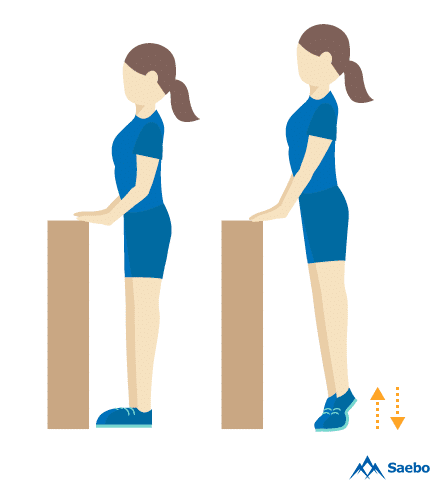
Exercise 1: Heel Raises (Holding On)
3 sets of 10
Find a sturdy chair or countertop you can hold onto for support. Hold onto the chair or counter, and raise yourself up onto your tiptoes, keeping your knees straight and holding your upper body tall. Lower yourself back to the floor slowly, and repeat.

Exercise 2: Side Stepping (Holding On)
3 sets of 10 (1 rep = both feet)
Use a counter or ledge to hold on to, or ask someone to give you a hand to hold for balance. Place tape on the floor in a straight line. Step sideways to cross the line, crossing one leg across the front of the other leg. Reverse the motion to return to the starting point, this time crossing a leg behind.
Intermediate Level Balance Exercises
The intermediate level exercises use the same basic ideas as the basic exercises, but without something to hold onto. After practicing the basic level exercises for a while, you should be able to perform them without assistance. However, for safety, always have a counter or chair nearby to grab if you start to lose your balance.
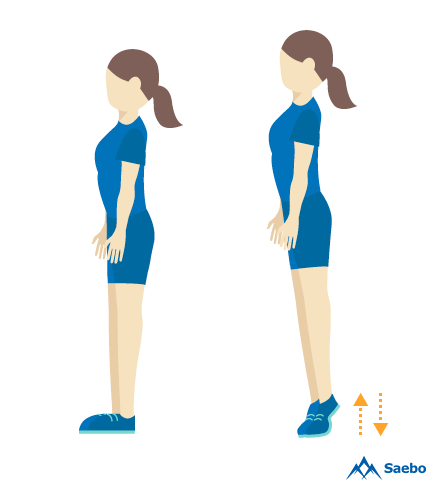
Exercise 3: Heel Raises (Not Holding On)
3 sets of 10
Stand with your feet flat on the floor and your arms at your sides. Raise yourself to tiptoe, keeping your upper body and knees straight. Slowly lower and repeat.
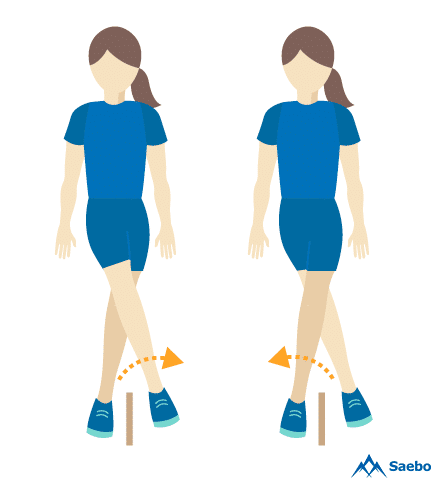
Exercise 4: Side Stepping (Not Holding On)
3 sets of 10 (1 rep = both feet)
Perform the side step, crossing your legs across each other as you move sideways across a straight line, but without holding on. Go slowly to avoid a fall, and be ready to grab a hold of something if you lose your balance.
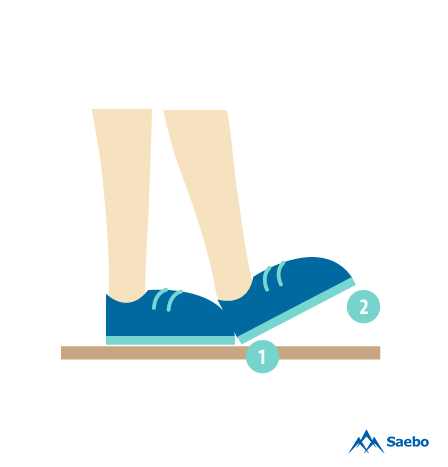
Exercise 5: Heel-to-Toe Walking
20 steps (10 for each foot)
Using the straight tape line for side stepping, walk forward, placing the heel of your foot directly in front of the toe of your other foot as you walk. Continue to the end of the tape, turn, and repeat by returning to the starting point.
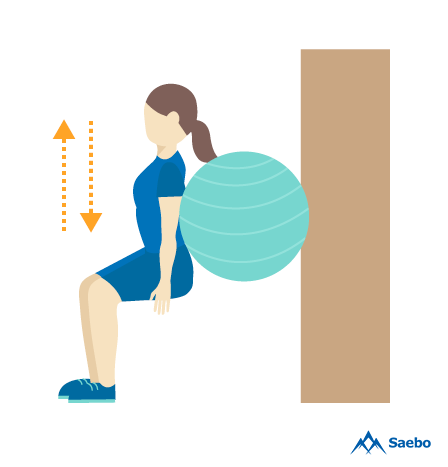
Exercise 6: Squats Against Gym Ball
3 sets of 10
Place an exercise ball between your back and a wall, standing tall. Slowly lower into a squatting position, holding on with one hand if needed or not holding on at all. Roll back up to a standing position and repeat.
Advanced Level Balance Exercises
Once you start noticing improved balance, do not stop exercising. You are still building those connections. Now it's time to move on to advanced level exercises.
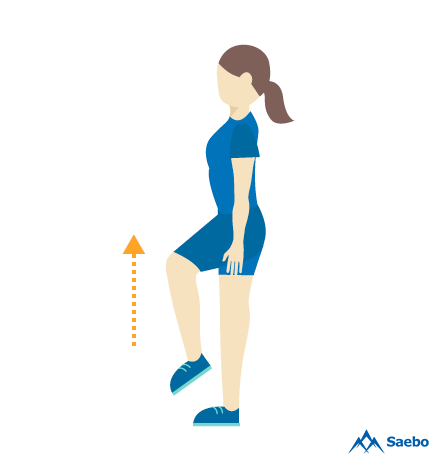
Exercise 7: Single Leg Standing
3 sets of 5
Place both feet flat on the floor. Slowly lift one leg until you are balanced on the other leg. Hold for a count of 10, and slowly lower it back down. Alternate legs and repeat.
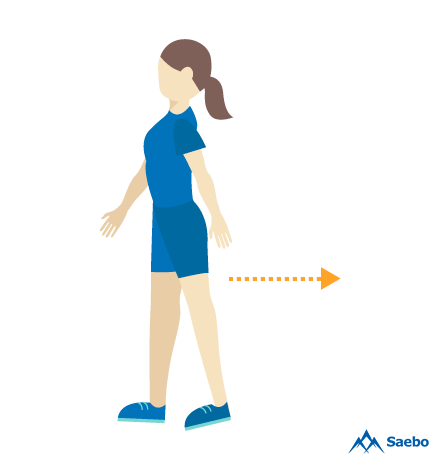
Exercise 8: Backwards Walking
20 steps
In a room that is free from obstacles, walk backwards slowly. Try to avoid looking where you are going, but use your sense of balance and slow movements to avoid a fall. At first, perform this exercise with something closeby to hold onto like a wall or countertop until you gain confidence in your abilities.
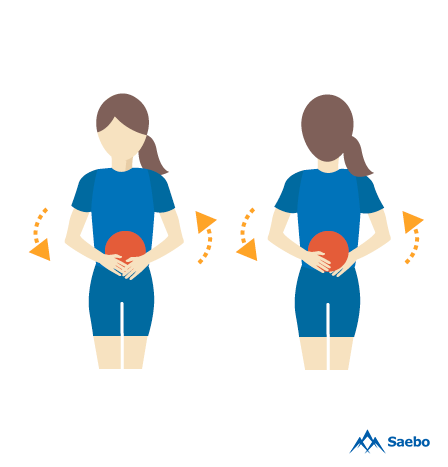
Exercise 9: Weighted Ball Pass
3 sets of 10
Using a weighted exercise ball, slowly pass the ball from hand to hand as you circle it around your body. Start by circling the body in a clockwise motion. Then, repeat in a counter-clockwise motion. Perform this exercise while standing.
Finding Balance Again Will Improve Many Aspects of Life After Stroke
In the United States alone, 600,000 people will suffer from a stroke every single year, and as many as 30 percent of those patients will have ongoing physical problems as a result. For some, that will include a loss of balance. Losing your sense of balance changes many aspects of life. Simple actions, like rising out of a chair, become increasingly complex and require a tremendous amount of thought and effort. With a careful exercise routine at home like these balance exercises for stroke recovery, combined with physical and occupational therapy, you can limit these problems and enjoy a full life, even after a serious stroke.
Whether you are a caregiver, occupational therapist or even a stroke survivor yourself, Saebo provides stroke survivors young or old access to transformative and life changing products. We pride ourselves on providing affordable, easily accessible, and cutting-edge solutions to people suffering from impaired mobility and function. We have several products to help with the stroke recovery and rehabilitation process. From the SaeboFlex, which allows clients to incorporate their hand functionally in therapy or at home, to the SaeboMAS, an unweighting device used to assist the arm during daily living tasks and exercise training, we are commitment to helping create innovative products for stroke recovery. Check out all of our product offerings or let us help you find which product is right for you.
All content provided on this blog is for informational purposes only and is not intended to be a substitute for professional medical advice, diagnosis, or treatment. Always seek the advice of your physician or other qualified health providers with any questions you may have regarding a medical condition. If you think you may have a medical emergency, call your doctor or 911 immediately. Reliance on any information provided by the Saebo website is solely at your own risk.



